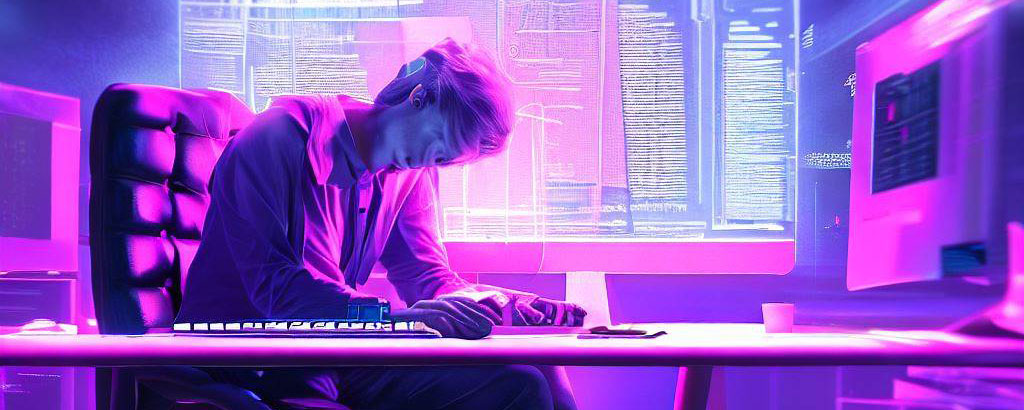I wrote this artilce in November of 2020 and think it is still relivent, so I'll repost it here. Enjoy!
The topic this month was uncovered during pre-meeting banter and catching up with clients. Depending on the subject of a meeting, I often recommend turning off the video to avoid overtaxing myself and the others on the video conference. When I said why, to minimize Zoom fatigue, more than not, I had to explain what Zoom fatigue is. As such, I thought it would be worth looking into the origins of “Zoom fatigue,” and what we know about it. The business counselors at the SBTDC have done a LOT of video conferences over the last few months. As of August 17, the SBTDC has clocked in 2,977 video conference client meetings representing 4,220 hours since March– excluding our internal staff meetings. That’s a lot of time on Zoom! When we first started video conferencing, I noticed “Zoom fatigue” within a week. I looked at what others have written about it and started implementing strategies that helped me to keep going with endless video conference. Here is what I found:
What is Zoom Fatigue?
Zoom fatigue is a trendy term and new manifestation of technostress, “a modern disease of adaption caused by an inability to cope with modern technologies in a healthy manner” (Brod, 1984). Specifically, Zoom fatigue is one of many new challenges as a result of people lacking healthy strategies to cope with changes forced upon us due to COVID-19. In this case, video conferences. As I paused to consider if I had experience with technostress before, my first thought was when Microsoft added the “ribbon” to their Office Suite. Oh, how I hated them for that change. It made the simplest of tasks hard, and I experienced a bit of anxiety when I needed to do anything in Word, Excel, or PowerPoint. I know I wasn’t the only one complaining about it! But, there were no articles in main-stream media coining new phrases like “ribbon fatigue.” I think there might have been articles on it if we were all forced into using Office 2007 at the same time. It would have been sheer chaos. And if you recall, it was for many. But, we worked through it and found ways to get the job done. With everyone moving to social distancing and video conferencing at the same time, we are all trying to figure out how to use the technology without depleting our energy. The massive shift to video conferences has, I propose, created an environment worthy of a few new catchphrases.
Why is video conferencing so demanding?
I am going to summarize the research of several peer-reviewed articles. The references are below if you want to read them for yourselves (#Individual_Iinvestigation_of_the_truth). We all have developed communication skills throughout our lives. We can read body language, measure the temperature – or “feel” of a room, have a good idea if people are hearing and understanding us. We can see if someone is confused by what we just said. In meetings, we can scan a room in an instant and “know” what’s happening. Most of the heavy lifting of this complex information processing occurs through automatic and subconscious mechanisms we have developed over time. The challenge with video conferencing is that we rely on the automatic feedback processed by the subconscious to get through the meetings, but everything is different. We don’t have an automatic-autopilot to hand us our communication meta-data. So, we need to work hard at collecting and processing all the body language and non-verbal communication that our brains are so good at doing automatically in an ordinary meeting. Plus, all we see are talking heads, of various sizes, with different video quality, with diverse backgrounds. Oh, and many of us are working from home with all the potential distractions beyond the camera.
Our brains are working overtime, and we struggle to find that non-verbal feedback. With the additional mental load of video conferencing and our lives and society turned inside out, I propose there is just a bit of extra stress in everyone’s lives. Oh, and if you happen to own or run a business, I think I would be safe saying you are experiencing more than a bit of extra stress.
What can we do about it?
• The first thing is first, BREATH! One researcher has found that we tend to have shallow breaths during video conferences (Zoom Apnea – gotta love those catchy phrases!).
• Turn off the video – or talk on the phone.
• Take breaks between meetings.
• Take breaks from your computer/devices
• Manage your stress (a topic for another time)
o Mindfulness practices
o Drink water (stay hydrated)
o Get good sleep
o Eat good (for you) foods
o Exercise
I hope you found this information compelling and actionable.





